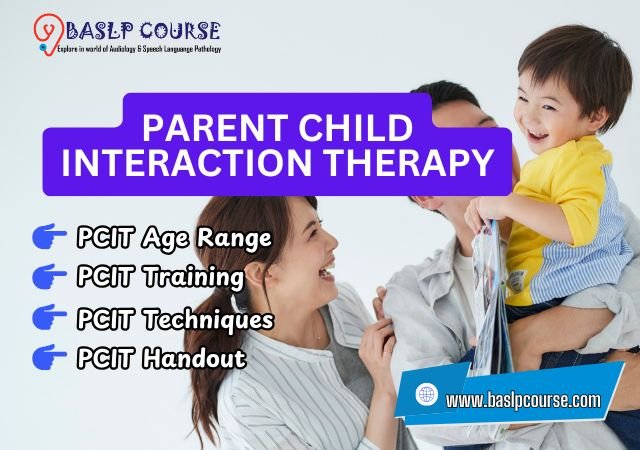Management of Normal Non-Fluency: Rational, Techniques and Strategies: The repeating, pauses, backing up, holding on to sounds and general confusion of “thinking and talking” are very normal. Children between three and four years of age have new experiences they want to tell you about without knowing how to put enough words together to express themselves smoothly. This is why their speech is sometimes non-fluent. Here, we will discuss about the management of normal non-fluency.
Management of Normal Non-Fluency
Preventing and reducing negative emotions
One of the very first objective in treatment of young children beginning to stutter is to eliminate PFAGH, the acronym representing the negative impact of Penalty, Frustration, Anxiety, Guilt, Hostility.
Reducing Penalty and Frustration
Penalty Reduction: The stutterer’s negative emotional states results from the rejecting and punishing reactions of his listeners. Accordingly, much of the speech pathologist’s time may be spent in counseling the parents to help them understand that these vulnerable children need permissiveness rather than punishment and that it is unwise to make the child feel that he has done something wrong when he stutters. Sometimes when he quits getting punished for stuttering, he quits stuttering.
Reducing frustration: Children in early stage of the disorder usually experience little frustration so far as their stuttering is concerned. In counseling parents we must help them to understand the role of frustration in precipitating stuttering. There is no need to eliminate all the frustration; we merely need to decrease it. The solution is, parents need to do two things:
- Reduce the number of the child’s frustration experiences and
- Build up his frustration toleration.
Increasing frustration tolerance: There are two major ways in which we can build up frustration tolerance.
- Empathic understanding of the needs of others
- Desensitization or adaptation.
Reducing Anxiety, Guilt and Hostility
We can reduce these reactions by
- Reducing the penalties and frustrations that beget them
- Outlets other than stuttering should be made available.
- The beginning stutterer need extra reassurance that he is loved and accepted.
We find many homes where the need to express one’s feelings of anxiety, guilt and hostility is neither understood nor accepted.
Play therapy: We can offer the child an opportunity through play to release her forbidden feelings. We can provide her with at least one situation in which she finds a loved and loving adult who understands and accepts her feelings, who actually rewards their expressions whether the child expresses them verbally or through acting out.
Creative dramatics: Another method for relieving the pressures of anxiety, guilt and hostility so that they do not contribute to the stuttering problem is that of creative dramatics. In this way activity, the children, guided by an imaginative adult leader, improvise a play, take the various parts and invent their own dialogue. Children frequently select and play parts that provide for the expression of their more intense feelings. Creative dramatics is found to be more useful when much of the emotional conflict was due to sibling rivalry, fears of local bully or teasing by child’s playmate. In such instances, child needs more than a permissive parent figure; he needs a permissive group.
Parental Counselling: We have referred frequently to the counseling of parents in the reduction of all the factors that increase stuttering.
- Parents need education and information, but this is not all that counseling provides.
- They also need relief from their anxieties, guilt and hostilities.
- They need the opportunities to verbalize their own feelings in the presence of a permissive, understanding listener.
- They need to learn to view the stuttering child objectively.
Jointly with the clinician, they must explore all his problems, not just his stuttering. In is doing, they often realize their own perfectionistic strivings, their own childhood conflicts, their own present acting out of relationships they had with their own parents long ago.
Reducing the Communicative Stress: All stutterers at any stage show stuttering when they are bedeviled by the fluency-disrupting influences we now list. The beginning stutterer is especially vulnerable, and we have been able to cure more early stutterers by reducing the fluency disruptors in the speech environment than by any other means.
How to prevent hesitant speech
Hesitant speech occurs as the result of two opposing forces.
- First, there must be a strong need to communicate
- Second, this urge must be blocked by some counterprerssures.
Some of the common counterprerssures that oppose the desire for utterance are the following:
- Inability to find or remember the appropriate words.
- Inability to pronounce or doubt of ability to articulate.
- Fear of the unpleasant consequence of the communication.
- The communication itself is unpleasant, in that it recreates an unpleasant experience.
- Presence, fear or threat of interruption.
- Loss of listener’s attention.
We must remember that beginning stutterer is still learning to talk. His speech is not stabilized. But the mere fact that he has some fluency, and all stutterers do, indicate that, with a little less pressure, stabilization may occur.
Lowering the standards of fluency: Communicative stress can also come from the need to talk like others do. If the parents or other children set standards of fluency far beyond the child’s ability to imitate, he is almost certain to falter. Parents provide the models for all behavior whether they want or not. It is not enough for parents to become better listeners; they must also provide models of fluency that are not too difficult for the child to follow. It is difficult for some parents to simplify their manner of talking to children, but most them manage it once they understand why they should talk.
Reducing the communicative demands: Parents frequently report that the young child has more stuttering when he first comes back from school or from playing with other children. They think it is because of the excitement or some baleful influence of the teacher. The better explanation often is that this is the time that parents give the child a cross-examination.
References:
⇒ STUTTERING An Integrated Approach to Its Nature and Treatment – BARRY GUITAR, PH.D. (Book)
⇒ Stuttering and Cluttering – David Ward (Book)
⇒ Speech Correction An Introduction to Speech Pathology and Audiology – Charles Van Riper, Robert L. Erikckson (Book)
You are reading about:
Management of Normal Non-Fluency: Rational, Techniques and Strategies







0 Comments